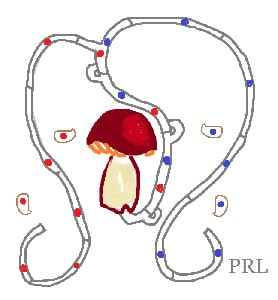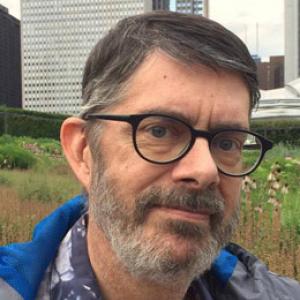Patrick Leacock, PhD.
Presenting on The Joy of Fungal Sex
This presentation looks at the strange and wonderful diversity of reproductive strategies and life cycle options. Ever since fungi arrived on the land and developed hyphae, they have explored many ways to propagate, soon rejecting the basic male-female sex paradigm. Fusion of compatible hyphae controlled by mating genes replaced the use of single-celled gametes. Some fungi have two mating types; other fungi can have hundreds or thousands.
Many fungi such as molds reproduce asexually, but when the going gets tough, some fungi can self-reproduce sexually. Mushrooms have gone a step further to keep their options open. Rather than cells having a diploid nucleus following mating, the nuclei from the two mated individuals remain separate, forming a dikaryon with two haploid nuclei in each cell. This allows a mated individual to fuse with and “fertilize” an un-mated individual by donating compatible nuclei. Oh and those mushrooms that we love to collect and cook for dinner – those are spore-producing sex organs.
Patrick is a mycologist documenting the mushrooms of the Chicago Region with collections going to the Field Museum of Natural History, where he worked for 14 years and continues as an associate. He now teaches botany and mycology at the School of the Art Institute of Chicago.
He assists on forays as a scientific advisor for the Illinois Mycological Association. He started his mushroom activities with the Minnesota Mycological Society and obtained his PhD from the University of Minnesota.
Patrick served as Voucher Coordinator for 20 years documenting fungi at the North American Mycological Association (NAMA) annual forays. Visit Patrick's website at www.mycoguide.com
Many fungi such as molds reproduce asexually, but when the going gets tough, some fungi can self-reproduce sexually. Mushrooms have gone a step further to keep their options open. Rather than cells having a diploid nucleus following mating, the nuclei from the two mated individuals remain separate, forming a dikaryon with two haploid nuclei in each cell. This allows a mated individual to fuse with and “fertilize” an un-mated individual by donating compatible nuclei. Oh and those mushrooms that we love to collect and cook for dinner – those are spore-producing sex organs.
Patrick is a mycologist documenting the mushrooms of the Chicago Region with collections going to the Field Museum of Natural History, where he worked for 14 years and continues as an associate. He now teaches botany and mycology at the School of the Art Institute of Chicago.
He assists on forays as a scientific advisor for the Illinois Mycological Association. He started his mushroom activities with the Minnesota Mycological Society and obtained his PhD from the University of Minnesota.
Patrick served as Voucher Coordinator for 20 years documenting fungi at the North American Mycological Association (NAMA) annual forays. Visit Patrick's website at www.mycoguide.com



